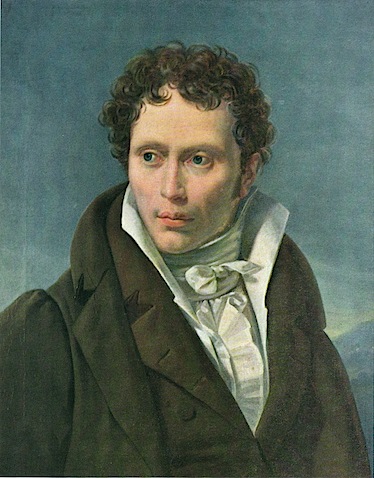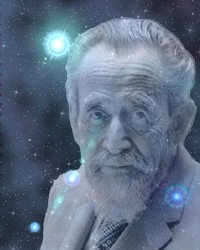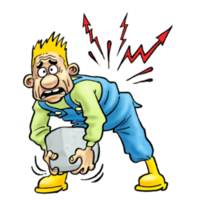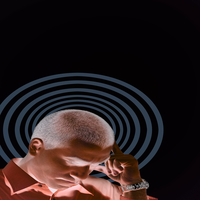The Cycles of Life

“The Book of the Heart: Embracing the Tao” (Loy Ching-Yuen)
“In moments of darkness and pain remember all is cyclical. Sit quietly behind your wooden door: Spring will come again.”
–Loy Ching Yuen (Chinese Taoist T’ai Chi Ch’uan Master, 1873-1960)
The Cycle of the Day

“Each day is a little life: every waking and rising a little birth, every fresh morning a little youth, every going to rest and sleep a little death.”
–Arthur Schopenhauer (German Philosopher, 1788-1860)
Everything In Its Time

“The Book of the Heart: Embracing the Tao” (Loy Ching-Yuen)
“We can hold back neither the coming of the flowers nor the downward rush of the stream; sooner or later, everything comes to its fruition.”
–Loy Ching-Yuen (Chinese Taoist T’ai Chi Ch’uan Master, 1873-1960)
Seeing in Cycles

“What really matters are not fascinating details to be memorized by the curious mind, but the gaining of a whole view of cosmic, planetary, and human evolution. It is to be able to ‘see’ or even feel this evolution, with its interconnecting cycles and subcycles, microcosmic as well as macrocosmic.”
–Dane Rudhyar (a.k.a. Daniel Chenneviere, French-born American Composer, Theosophist and Astrologer, 1895-1985)
“Occult Preparations for a New Age (A Quest book)” (Dane Rudhyar)
Rhythms in the Brain

It is often a bit frustrating to read articles about the brain in which the writer says things like: “research has shown that the insula does this…” or “the amygdala does that…”
This idea that it is possible to reduce brain functions to regions of the brain is not correct. Some years ago I used the term “Neo-phrenology,” to describe this fallacy, though I am sure that I was not the first. (Phrenology was the old and discredited theory that you tell things about people by examining the bumps on their heads.)
So why is it a fallacy? The idea that certain functions can be “localized” to a bit of the brain is called “naïve localizationism.” The vast majority of the psychological functions of the brain are performed by distributed networks, not a single lump of tissue. One of the remarkable things about the human brain is that it can recruit new circuits as they are need. If we do not have enough brainpower to solve a problem, other systems are taken off line so that they do not distract and may be able to help. You have probably had the experience of working on something so intensely that you lose track of time, and fail to hear things going on around you.
Yes, there are regions that have jobs to do. For instance the auditory cortex is responsible for processing sound. But after that initial processing the rest of the brain becomes involved in deciding what to do with the information. The key to understanding the brain is how different regions of the brain communicate. As I recently mentioned in a different context, there are good reasons for believing that a number of problems, from the schizophrenias to the attention deficit disorders, may all be a result of poor communication between different regions of the brain.
Part of the problem is working out how regions communicate has been technical: we have not had the computers or hardware to do the measurements. But that is beginning to change.
Earl Miller, a professor of neuroscience at Massachusetts Institute of Technology’s Picower Institute for Learning and Memory, recently said that today’s faster computers and more advanced electronics might provide scientists with the tools they need to unlock the brain’s mysteries.
“Multiple electrode recording techniques, offer a whole new level of brain interactions that can’t be seen using the [current] piecemeal approach.”
Two studies published recently in th journal Science support this idea.
In the first Thilo Womelsdorf and a group of neuroscientists at the F. C. Donders Center for Cognitive Neuroimaging at Radboud University Nijmegen in the Netherlands, looked at the electrical activities of groups of neurons in the brains of cats and monkeys wile they were engaged in an array of different tasks. They found that two groups of neurons could only communicate efficiently with each other when their rhythms are coordinated, or synchronized. If the rhythms are not coordinated, then one group sends information while the other is not ready to take it on and vice versa.
The researchers found that when the rhythms of electrical activity are synchronized between neurons in distinct brain areas, memories are made and tasks are completed more efficiently.
The other study, by scientists at the University of Melbourne in Australia, also revealed communication between the cerebral cortex and the deep medial temporal region.
They flashed two images at a group of macaque monkeys for less than a second. The monkeys had to decide whether the spatial orientation of a stack of bars in two images were the same or different. While the animals worked, researchers monitored the electrical fields in the posterior parietal cortex, which is one part of the system involved in directing spatial attention. At the same time they looked at the medial temporal area, a region deep in the midbrain that handles movement perception. The researchers had hypothesized that these two areas need to communicate with one another to enable reasoning.
The researchers observed activity first in the parietal cortex, followed by synchronous action there and in the medial temporal area. The delay illustrates “a top-down” feedback from the cortex, which then signals the lower area.
One of the authors, Trichur Vidyasagar, said,
“The parietal neurons seem to code for what is salient or relevant in the world and allocate attentional resources accordingly. The medial temporal neurons are sensory ones that process the visual signals, but due to the influence of the parietal cortex the activity across the medial temporal area is varied.”
The studies were accompanied by an editorial in which Robert Knight, a cognitive neuroscientist at the University of California, Berkeley, praised the findings – and their potential significance.
This research is important for two reasons:
First it confirms that the key to understanding the brain is the interaction of networks.
Second, there are a number of periodic disorders, such as depression, seasonal affective disorder, mania and even some rare types of episodic psychosis that are episodic and are not associated with any clearly defined neuroanatomical disruption. It may well be that some of the periodic symptoms are caused by intermittent network dysfunction, as a result of disturbed oscillatory dynamics.
“In all things there is a law of cycles.”
–Publius Cornelius Tacitus (Roman Historian, Writer, Orator and Public Official, A.D.56-c.120)
“Human beings, vegetables or cosmic dust, we all dance to the same mysterious tune, intoned in the distance by an invisible player.”
–Albert Einstein (German-born American Physicist and, in 1921, Winner of the Nobel Prize in Physics, 1879-1955)
“It has been said that a complete understanding of the Law of Cycles would bring man to a high degree of initiation. This Law of Periodicity underlies all the processes of nature and its study would lead a man out of the world of objective effects into that of subjective causes.”
–Alice A. Bailey (English Writer, Spiritual Teacher and Founder of the Arcane School, 1880-1949)
“At the heart of each of us, whatever our imperfections, there exists a silent pulse of perfect rhythm, a complex of wave forms and resonances, which is absolutely individual and unique, and yet connects us to everything in the universe. The act of getting in touch with this pulse can transform our personal experience and in some way alter the world around us.”
–George Leonard (American Aikidoist and Writer, 1923-)
Back Pain, The Brain and Pain Cycles

A German research team using a specialized imaging technique called diffusion tensor imaging (DTI) to look at the differences between back pain sufferers’ and healthy volunteers’ brains found that individuals suffering from chronic low back pain also had micro-structural changes in their brains. The findings were presented at the annual meeting of the Radiological Society of North America in Chicago by the lead researcher Dr Jurgen Lutz, a radiologist at Ludwig-Maximilians University in Munich, Germany.
DTI tracks the movement of water molecules in the brain’s gray and white matter. Individual water molecules are constantly in motion, colliding with each other and other nearby molecules, causing them to spread out, or diffuse. DTI allows us to analyze water diffusion in the tissues of the brain. In normal white matter, water diffuses in only one direction. So if they are moving in the “wrong” direction, we can use this as an indication that there are changes in the fiber pathways.
The investigators studied 20 patients who were experiencing chronic back pain with no precisely identifiable cause and 20 age- and gender-matched healthy volunteers. DTI was performed to measure the diffusion in several areas of each patient’s brain.
They discovered the brains of patients with chronic back pain had a more complex and active microstructure compared with the healthy volunteers’ brains.
The changes were found in regions of the brain associated with pain-processing, emotion and stress response, including the cingulate gyrus, postcentral gyrus and superior frontal gyrus.
Although it is possible that theses structural disturbances are a cause of chronic pain, it is more likely to be the other way round.
This leads us to a very important concept that is not talked about as much as it should be: it is the idea of pain cycles. Pain cycles can have a physical or psychological origin and are thought to be maintained by some of the centers in the brain that process pain and emotional distress. The two are often mixed together: pain is extremely common in both depression and in bipolar disorder, and pain can, of course, make you feel depressed.
Theses pain cycles will often persist for long periods after the original cause of the pain has gone. So we may continue to feel pain long after a broken bone has healed, or we may continue to suffer emotionally long after a bad relationship should have been dead and buried. Many interventions like acupuncture or injecting steroids or anesthetics into trigger points can interfere with the pain cycle. Similarly there are many therapies, including some of the tapping therapies, that seem to “re-set” some of the systems in the nervous and subtle systems of the body.
In my forthcoming book Sacred Cycles, I talk a lo about these vicious pain cycles and how to interrupt them.
“Pain is part of being alive and we need to learn that. Pain does not last forever, nor is it necessarily unbeatable, and we need to be taught that.”
–Rabbi Harold S. Kushner (American Rabbi Aligned with the Progressive Wing of Conservative Judaism and Writer, 1935-)
“Softness is a dream in every ache to become a better soul.”
–John Kells (Irish-born British Grand Master of T’ai Chi Ch’uan, 1940-)
Cluster Headache

There are dozens of types of headache, but one of the most serious and debilitating is called “cluster headache.”
It is a very severe headaches of a piercing quality that most often occurs near one eye or temple. The pain typically lasts for fifteen minutes to three hours. The headaches are usually
unilateral and occasionally change sides.
It is difficult to overstate the severity of the pain. I once mentioned that I could always tell if there was someone in the clinic experiencing a cluster headache because everyone could hear him banging his head against the wall to try and get some relief. They may also be described as “suicide headaches:” a reference to the
excruciating pain and resulting desperation that has culminated in
actual suicide.
There are some odd symptoms that may accompany the headache, such as:
- Stuffy or runny nose in the nostril on the affected side of the face
- Red, flushed face again on the side of the headache
- Swelling around the eye on the affected side of the face
- Reduced pupil size
- Drooping eyelid
As the name implies, cluster headache usually comes in clusters that last for a week or two or as long as two months. In about 10-15% of people they are chronic. The periodicity of the clusters is remarkable and has lead many of us to speculate an involvement of the brain’s “biological clock” or circadian rhythm. In an observational study we found that clusters were more likely to begin in the month of birth of the sufferer, though we never knew how much to read into this.
Cluster headache is far more common in tall men: most are over six feet tall. When we first described cluster headache in women in the early 1980s it was a rarity, though more women have been getting cluster headache in recent years: we have no idea why. Some years ago we also described that they were more common in men who smoked heavily and drove more than 15,000 miles each year. It was impossible to say whether the smoking was cause or effect. Cluster headache is, along with diabetes and multiple sclerosis, an illness that becomes more common in peple who live far from the equator.
We and others also found that nitrates could trigger episodes in some people: that first came to light when we saw three men who used them during sex.
Cluster headaches are most likely to be due to an abnormality in the hypothalamus, which could explain why cluster headaches frequently strike around the
same time each day, and during a particular season, since one of the
functions the hypothalamus performs is regulation of the biological clock and the metabolic abnormalities that have been reported in some patients.
During the onset of a cluster headache, the most rapid abortive treatment is the inhalation of pure oxygen (12-15 litres per minute in a non-rebreathing apparatus). When used at the onset of headache this can abort the attack in as little as 5
minutes. Once an attack is at its peak, using oxygen therapy appears to
have little effect. Alternative first-line treatment is subcutaneous
administration of triptansumatriptan and zolmitriptan. Because of the rapid onset of an attack, the triptan drugs are usually taken by subcutaneous injection
rather than by mouth. While available as a nasal spray, it had been thought that the spray would not be effective to sufferers of cluster headache due to the swelling
of the nasal passages during an attack. However new research from London has shown that 5-mg and 10-mg doses of zolmitriptan intranasal spray are effective within 30 minutes and well tolerated in the treatment of acute cluster headache.
Lidocaine (or any topical anesthetic) sprayed into the nasal cavity may relieve or stop the pain, normally in just a few minutes, but long term use is not suggested due to
the side effects and possible damage to the nose and sinuses.
Previously vaso-constrictors such as ergot
compounds were also used though less so now becuase of their side effects and new options being available. Oddly enough some sufferers report a similar relief by
taking strong cups of coffee immediately at the onset of an attack.
Many different types of prophylaxis have been tried, with lithium, the calcium channel blocker verapamil at a dose of at least 240mg daily, and the anticonvulsant topiramate.
Now a new report in the journal Neurology suggests that 22 out of 26 people with cluster headache who used psilocybin reported that the drg aborted their attacks. 25 of 48 psilocybin users and 7 of 8 LSD users reported cluster period termination; 18 of 19 psilocybin users and 4 of 5 LSD users reported remission period extension. The authors conclude that research on the effects of psilocybin and LSD on cluster headache may be warranted.
From what we do understand about the pathogenesis of cluster headache it is not difficult to see how psilocybin and LSD may help. But it did worry me that this report might lead to people self-medicating with hallucinogens without any kind of support or guidance.
That being said, this recent report shows once again the importance of listening to what people have to say: they often have the answers inside of them. And those answers may lead to a new range of treatments.
Blue Light at Night Morning Delight

Do you ever see that episode of the original Star Trek in which Spock is accidentally – and temporarily – blinded when he is exposed to ultra-bright light to drive out a parasite? For people who like to know such things, it was episode 29, entitled Operation: Annihilate!
In the end it turns out that he only needed to have been exposed to one invisible wavelength of light. Naturally enough, being Star Trek it all comes out all right in the end.
I was reminded of this as I examined some extraordinarily important recent research from Thomas Jefferson University in Philadelphia. We have known for a long time that light is an effective treatment for seasonal affective disorder (SAD). However, until now, nobody has been able to determine the best wavelength to use. This new research found that the most effective wavelength was blue. It is thought that blue light therapy may help a great many more things than SAD.
SAD is one of a group of disorders involving our circadian rhythms. Many experts are currently trying to establish the relationship between SAD and another major disturbance of circadian rhythms: bipolar disorder. They are certainly not the same thing, but they are closely related to each other. Some other circadian rhythm disturbances that may respond to blue light are sleep disturbances, jet lag, sleepiness during shift work and spaceflight.
It has always been assumed that the brain’s major pacemaker – the suprachiasmatic nucleus (SCN) – only responded to bright light at a certain time of day. The SCN regulates the production of melatonin by the pineal gland. The fact that lower-intensity blue light is more effective than the most visible kinds of light is part of a body of evidence that there is a separate photoreceptor system within the human eye. The system that resets the body clock to the 24-hour day is different from the rods and cones used in regular vision.
In linked research by the same investigators, as well as a team from and Brigham and Women’s Hospital and Harvard Medical School in Boston, blue light was shown to directly reduce sleepiness. People exposed to blue light were able to sustain a high level of alertness during the night when people usually feel most sleepy. The results suggest that light may be a powerful countermeasure for the negative effects of fatigue for people who work at night.
There is more to this research: breast cancer is linked to fluctuations in human circadian rhythms, with higher rates in industrialized countries where there is a great deal of exposure to artificial light at night. It has been suggested that melatonin may be a link between artificial light and breast cancer. Blue light may perhaps mitigate some of the effects of light on suppressing melatonin.
There is another point to be made here. Many people teach techniques of being able to see the human aura. Many of the techniques of the “See the aura in 30 seconds” type, are no more than visual illusions. But there is another group of techniques that involves the use of peripheral vision to gradually become aware of the fields around people, animals and plants. By a strange “conincidence” the ancients identified the pineal gland with the “third eye.” Have the researchers inadvertently found a biological mechanism for seeing auras?
“Sleeplessness is a desert without vegetation or inhabitants.”
–Jessamyn West (American Writer, 1902-1984)
Cycles
“Human beings, vegetables or cosmic dust, we all dance to the same mysterious tune, intoned in the distance by an invisible player.”
–Albert Einstein (German-born American Physicist and, in 1921, Winner of the Nobel Prize in Physics, 1879-1955)
My next full-length book will be entitled Sacred Cycles. I am in no doubt that an essential key to healing, and to finding and following the meaning and purpose of our lives, is learning to understand the cycles at play in our lives, relationships and in society as a whole is.
You may want to achieve some aim, you might want to follow the advice of a motivational speaker, but if your planets are not correctly, unless this is the right time in your life to follow through, chances are that you will be disheartened rather than being enlivened by the attempt.
All things experience cycles. Some are obvious: the rotating earth causes day and night; our moon generates the ebb and flow of the tides and the seasons’ change. Our energy levels rise and fall in concert with the cycles of the Universe. The geniuses who created homeopathy and Ayurvedic and Chinese Medicine all understood the profound importance of watching when symptoms appeared or changed. It is extremely useful to get in the habit of paying close attention to your energy and noticing when it is going up or down. We want to harmonize with the powerful cycles of the Universe, and it is always much easier to surf the crests of the waves than to try and swim against them.
During periods of low energy, our natural tendency is to try and use some artificial energy booster: a cup of coffee, a soda or a candy bar. Unfortunately, that approach ultimately leaves you more exhausted. It is usually better to be aware of the low energy point and use the time to take a short break and to do get up and stretch, if possible go outside and drink some fresh water. If you ignore your body’s needs for movement, breaks and sleep, it is inevitable that you will not be able t function at your best, and your productivity in all areas of you life will plummet.
The economist Edward R. Dewey was prompted to initiate a life-long study of cycles as he pondered the depredation of the Great Depression that began in 1929, and carried on through much of the 1930s. In 1941, Dewey established the Foundation for the Study of Cycles now based in Albuquerque, New Mexico. (There are three short but interesting free downloads on their website and some extraordinary lists of cycles, many of which have been confirmed over time.).
Over the years the work has branched out in kinds of different directions. There is more and more evidence that many of the major cycles that dominate our bodies, minds, relationships, society and the economy, are largely predictable.
I have known some people who strongly resisted the idea of cycles. It seems to contradict the notion of free will to learn that your life and indeed the whole universe vibrates in a series of regular and predictable rhythms caused by forces that may be unknown and uncontrollable. In fact if you can understand the nature of these cycles you will develop a remarkable degree of personal mastery.
I’m going to spend some time in the coming months explaining how an understanding of the cycles at work in your own life can dramatically improve your health and your sense of control.
“In all things there is a law of cycles.”
— Publius Cornelius Tacitus (Roman Historian, Writer, Orator and Public Official, A.D.56-c.120)
Climate Change and Plague
I’ve talked before about one of the reasons that I worry about climate change: it’s the potential for it to unleash illnesses that have been rarely seen in recent centuries. In the Middle Ages, the Black Death, killed a third of the population of Europe, or more than 25-30 million people. The most widely held theory is that the Black Death was Plague: a disease caused by the bacterium Yersinia (Pasteurella) pestis that is most often carried by fleas. In recent years one scholar has suggested that the Black Death was actually caused by anthrax, and in 2001, two epidemiologists raised the possibility that the Black Death was caused by an Ebola-like virus rather than a bacterium.
A paper in today’s Proceedings of the National Academy of Sciences, was written by an international team of scientists, who focused their research on Kazakhstan. Why look in central Asia? This seems to be the original center of the illness. The desert regions of Central Asia are known to contain natural foci of plague where the great gerbil (Rhombomys opimus) is the primary host of the Yersinia-carrying fleas.
The first epidemic originated in Asia and was apparently transmitted to Europeans in 1347. A Turkish army besieging a Genoese trading post in the Crimea allegedly catapulted plague-infested corpses into the town. The Plague spread from the Mediterranean ports and ravaged all of Europe between 1347 and 1351. Those outbreaks coincided with both warmer and increasingly wet weather. There were renewed outbreaks in 1361–63, 1369–71, 1374–75, 1390, and 1400. For more than two centuries, everything remained quiet, but then there were further outbreaks in Italy in 1629-1631, London in 1665, and Vienna in 1679. There was another Pandemic in Asia from1855-1870 that claimed the lives of millions, and again coincided with wetter and increasingly warm weather.
Fleas become active when the temperature exceeded 10C (50F), so a warm, frost-free spring has led to an early start to breeding. Over the last two years, the flea population has continued to grow when the spring was followed by a wet, humid summer.
We don’t need to be unnecessarily alarmist, but the evidence indicates that climatic changes could lead to more outbreaks of bubonic plague among human populations. And who knows what other illnesses are waiting in the wings as our climate changes, we travel more and our physical resilience declines?
“Humankind has not woven the web of life. We are but one thread within it. Whatever we do to the web, we do to ourselves. All things are bound together. All things connect.”
–Chief Seattle (Native American Leader of the Suquamish and Duwamish Tribes who became a Roman Catholic and Cooperated in Creating Peaceful Relations with European Settlers, c. 1786-1866)






